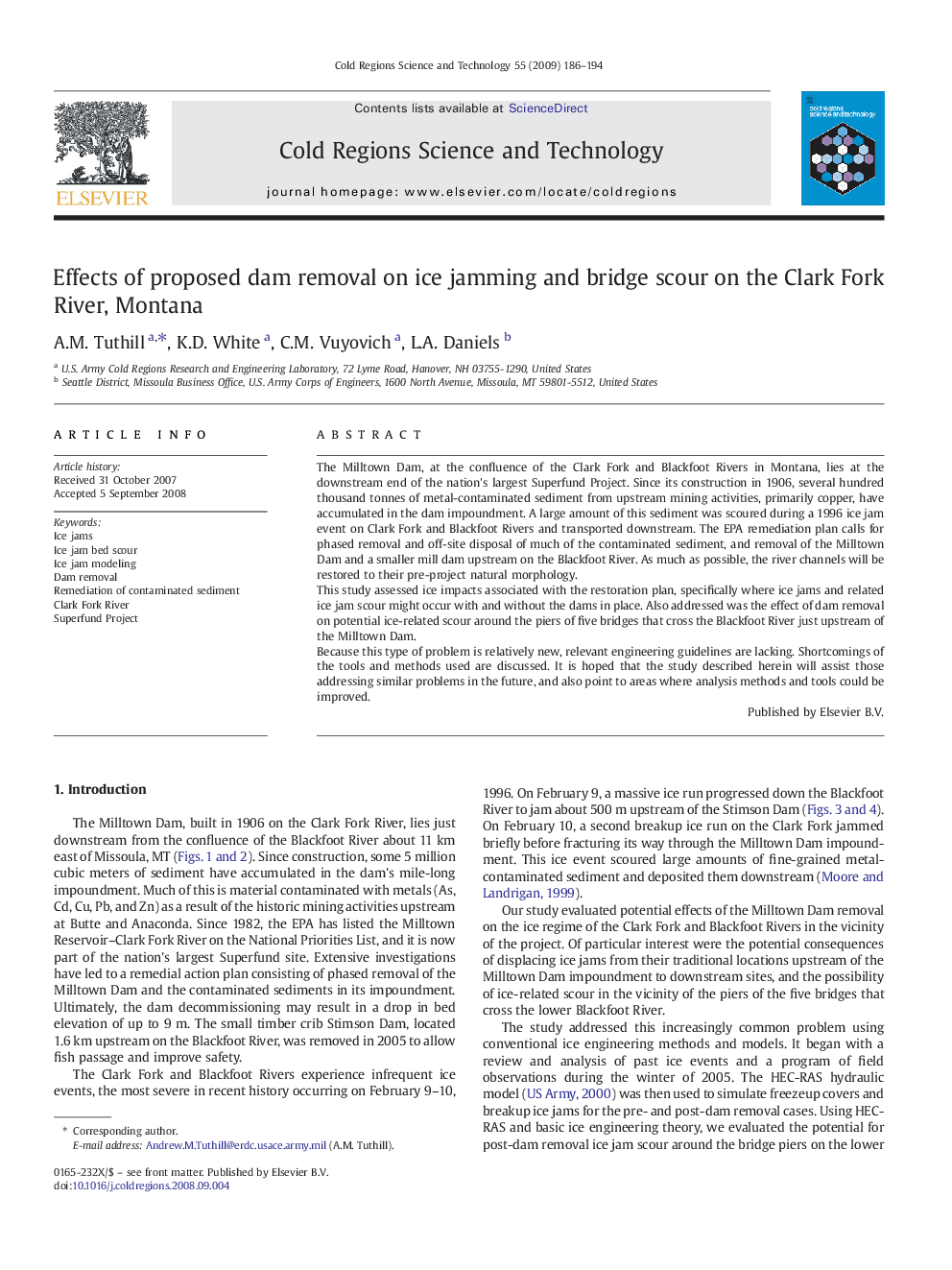| Article ID | Journal | Published Year | Pages | File Type |
|---|---|---|---|---|
| 4676550 | Cold Regions Science and Technology | 2009 | 9 Pages |
The Milltown Dam, at the confluence of the Clark Fork and Blackfoot Rivers in Montana, lies at the downstream end of the nation's largest Superfund Project. Since its construction in 1906, several hundred thousand tonnes of metal-contaminated sediment from upstream mining activities, primarily copper, have accumulated in the dam impoundment. A large amount of this sediment was scoured during a 1996 ice jam event on Clark Fork and Blackfoot Rivers and transported downstream. The EPA remediation plan calls for phased removal and off-site disposal of much of the contaminated sediment, and removal of the Milltown Dam and a smaller mill dam upstream on the Blackfoot River. As much as possible, the river channels will be restored to their pre-project natural morphology.This study assessed ice impacts associated with the restoration plan, specifically where ice jams and related ice jam scour might occur with and without the dams in place. Also addressed was the effect of dam removal on potential ice-related scour around the piers of five bridges that cross the Blackfoot River just upstream of the Milltown Dam.Because this type of problem is relatively new, relevant engineering guidelines are lacking. Shortcomings of the tools and methods used are discussed. It is hoped that the study described herein will assist those addressing similar problems in the future, and also point to areas where analysis methods and tools could be improved.
